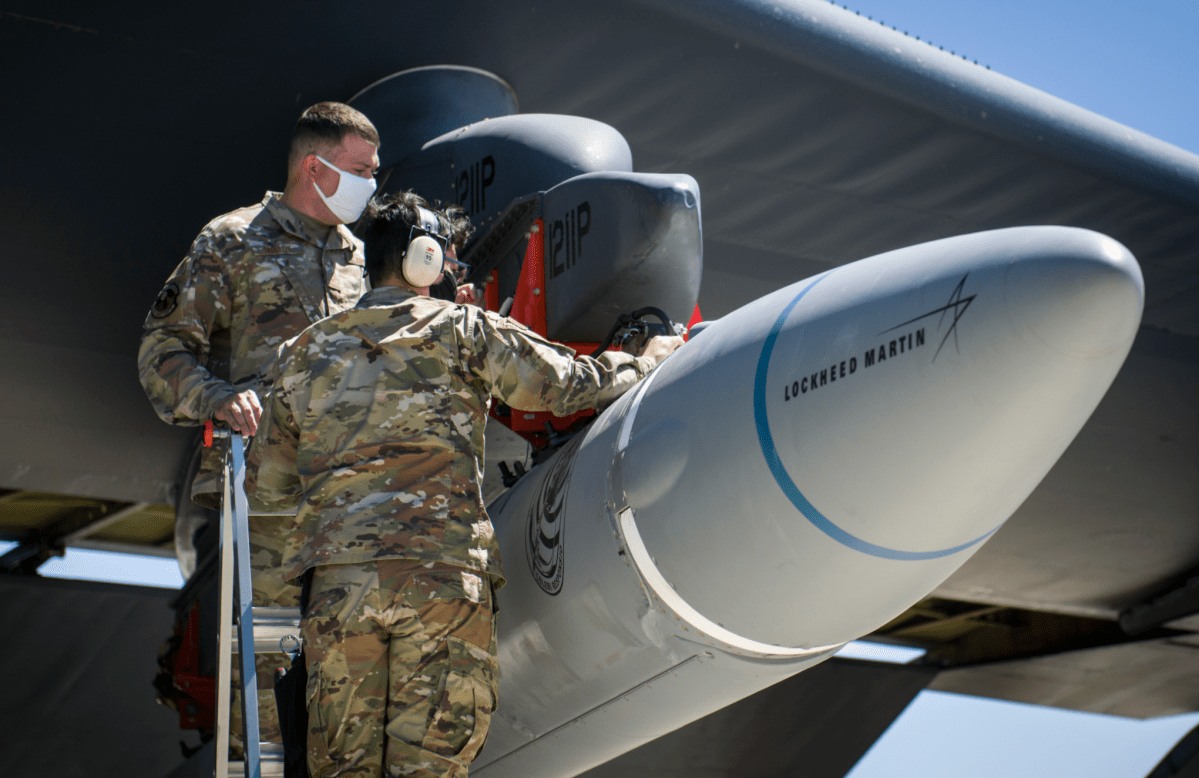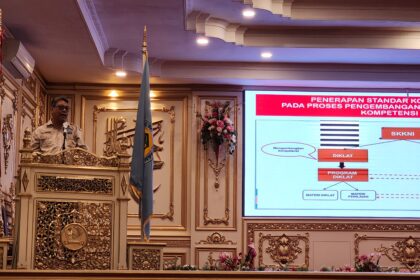[ad_1]
The race to develop a US Air Force hypersonic missile to match China and Russia faces its first crucial flight test within “the next 30 days,†Northwest Florida News reported.
The upcoming test of the AGM-183A Air-launched Rapid Response Weapon (ARRW) developed by aerospace contractor Lockheed Martin was announced by the Air Force’s Armament Directorate at Eglin Air Force Base.
A next-generation weapon capable of traveling at multiple times the speed of sound, the ARRW test is set for the Point Mugu Sea Range off the coast of Southern California, the report said.
The test of the missile will not involve live munitions and is designed only to test the ignition of the missile and its ability to boost a payload toward its target.
It will be launched from a B-52H bomber flying at about 50,000 feet.
The ARRW will carry only a “simulated glide vehicle†that “will not sustain flight, and will safely disintegrate soon after separation,†according to the Armament Directorate.
The US is aggressively pursuing development of hypersonic weapons, which travel at speeds fast than Mach 5, making them difficult to defend against.
That pursuit is in conjunction with a switch in focus of the national defense strategy from efforts to root out terrorists across the globe to a great-powers orientation focusing on “near-peer†adversaries, most notably Russia and China, the report said.
Russia and China have recently unveiled hypersonic weapons, although their numbers and operational status are not clear, the report said.
But some military experts say America doesn’t need hypersonic missiles, and is just pouring money down a hole.
“At the end of the day, I am not sure about the value of hypersonic weapons,†said one analyst, who wished to remain anonymous.
“While they are very fast, they also will generate a big heat signature and possibly a strong magnetic signal too (based on a rudimentary notion of physics).Â
“This means they will be detectable at some distance from the target and can be intercepted,†he said.
“My other concern is the focus on them takes away from other important needs. DoD has a curious ability to flush billions of dollars down the drain with no sense of prioritizing needs.Â
“If you take what is wasted, add it up, we could double the size of our fighting forces and stay below the current budget.
“We don’t need to copycat the Russians and Chinese.â€
The perceived threat prompted the Department of Defense’s Missile Defense Agency to award separate contracts of more than US$100 million each to Florida-based L3 Harris Technologies and Virginia-based Northrop Grumman to develop Earth-orbiting sensors capable of detecting and tracking hypersonic weapons from space, the report said.
The Armament Directorate at Eglin is managing the Lockheed Martin hypersonic missile effort under a contract carrying a not-to-exceed cost of US$480 million.
Under the contract, Lockheed Martin is working with the Air Force to design and develop the ARRW hypersonic weapon by Nov. 30 of this year.
The test follows a half-dozen previous “captive-carry†tests of the missile. In captive-carry testing, the missile is not launched from its host aircraft, but the performance of its electronics and other systems are assessed while it is attached to that aircraft.
The upcoming test will be conducted by the 412th Test Wing, a unit of the Air Force Test Center at California’s Edwards Air Force Base.
Meanwhile, across the world, a Norwegian cruise missile has been air-dropped from the internal weapons of a Lockheed Martin F-35A test aircraft, the Norway Defense Materiel Agency agency announced.
The anti-surface Joint Strike Missile (JSM) is a long-distance weapon that takes on heavily defended targets on land and at sea.
The JSM — developed by Raytheon Missiles & Defense and Norwegian defense company Kongsberg Defence Aerospace — is the only fifth-generation cruise missile designed to be launched from the internal weapons bay of the F-35A.
Its long standoff range, or distance from the launching aircraft to the target, keeps pilots out of harm’s way, Raytheon said.
The JSM’s navigation system allows it to rapidly change course in flight and fly at low, radar-evading altitudes.
Its imaging infrared seeker provides autonomous target recognition, and a two-way data link offers retargeting and mission abort options.
The aircraft will be able to carry two such missiles internally, while additional ones could be carried on the external wing pylons (obviously affecting the overall Low Observability of the aircraft), according to a report in The Aviationist.
“With this first drop, it was checked that JSM can be separated from an F-35A in a safe way. For that, we use an instrumented aircraft,†says Brigadier Jarle Nergård, who is head of the F-35 department in Defense Materiel.
“This aircraft is also equipped with three cameras inside the weapons bay and has mounted a separate camera pod on the wing with three more cameras. In order to be able to analyze exactly what is happening, both the aircraft and the JSM missile are marked with special photo marks that are accurately positioned.â€
The missile was also instrumented so that all telemetry data was recorded and sent via data link to the ground, The Aviationist reported.
During the test, AF-01 was chased by a two seater F-16D with a cameraman in the back seat who filmed the separation of the JSM from the F-35 so that footage could be analysed by the Norwegian team.
Following the first separation, more tests will be conducted with the JSM, that has already successful fit checks on all the F-35 variant external wing pylons as well as US Navy and Royal Australian Air Force F/A-18E/F Super Hornets, The Aviationist reported.
Along with Norway, Japan has also selected the missile for the JASDF (Japan Air Self-Defense Force) F-35As. Norway is expected to declare IOC (Initial Operational Capability) of the JSM in 2023.
[ad_2]
Source link










